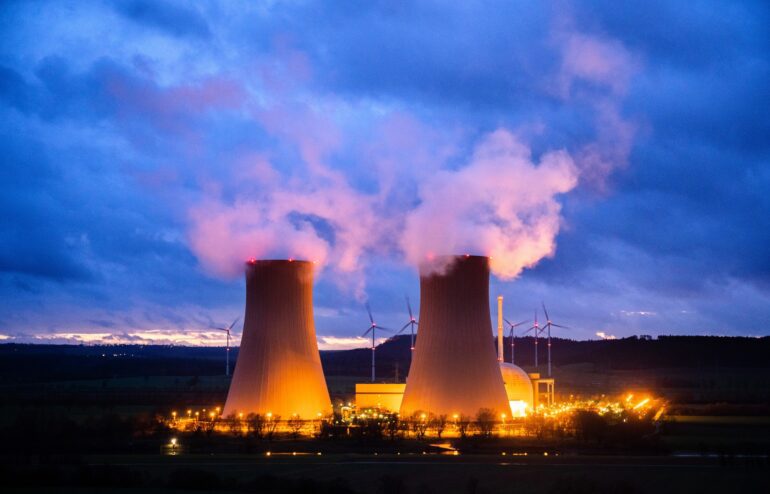TL;DR:
- Global governments are prioritizing low-carbon policies to meet Paris Agreement goals.
- Nuclear energy emerges as a reliable clean energy source, but safety concerns persist.
- AI, deep learning, and machine learning techniques are applied to enhance nuclear safety.
- AI enables predictive maintenance, smarter decision support, and fuel optimization.
- Operator monitoring systems and sensor fault detection benefit from AI advancements.
- AI automates safety assessments, text analysis, and enhances anomaly detection.
- Purdue University’s AI system achieves a 98.3% success rate in crack detection.
- AI aids in predicting and preventing disruptions in fusion facilities.
- AI’s impact on the nuclear industry holds promise for safety, efficiency, and sustainability.
Main AI News:
Governments worldwide are embracing low-carbon strategies, aligning with the Paris Agreement’s objectives to curtail greenhouse gas emissions and foster sustainable development. While renewable sources like wind and solar offer promising solutions, their intermittent nature and reliance on energy storage systems pose challenges. In response, nuclear energy emerged as a dependable alternative to meet the growing demand for clean and virtually limitless power.
Yet, the nuclear industry faces significant safety concerns, accentuated by incidents such as Three Mile Island and Chornobyl. Issues like human errors, excessive workloads, and information overload have resulted in failures and system downtime.
With the evolution of data analysis tools and computing capabilities, the nuclear sector is now leveraging artificial intelligence (AI), deep learning, and machine learning to bolster safety measures, optimize plant operations, and foster innovation.
AI methodologies facilitate physics-based predictive analysis, streamlining design, manufacturing, construction, operation, and fault detection. By harnessing data from diverse sources, including sensors and drones, digital twins are formed to automate tasks such as inspections, risk monitoring, reactor design, and predictive maintenance. Augmented and virtual reality technologies further enhance training and mitigate human-related errors during operation and maintenance.
Predictive Maintenance: Traditional nuclear power plants rely on scheduled preventive maintenance, which often results in excessive costs. Researchers have introduced an AI-based Prognostics and Health Management (PHM) framework that forecasts equipment’s residual useful life (RUL), enabling a transition from fixed to on-demand maintenance. This framework uses machine learning algorithms to establish a direct link between sensor data and RUL, optimizing maintenance strategies and minimizing resource wastage.
Decision Support Systems: Smart support systems are at the forefront of research to aid operator decision-making in nuclear plants. These systems combat information overload and operator stress during abnormal situations. Fault diagnosis systems, driven by artificial neural networks (ANNs) and knowledge-based systems, swiftly identify faults and provide accident-related insights. Declarative AI approaches and uncertainty estimation techniques enhance decision-making reliability, reducing human error and operator stress.
Fuel Management: AI has revolutionized fuel management in the nuclear industry by optimizing fuel assembly design, core reload patterns, and fuel performance assessment. It enables a comprehensive analysis of fuel properties and their interdependencies, ensuring safe and efficient operation. AI-driven models empower operators with multiple viable solutions for optimizing fuel bundle burnups and discharge burnups.
Operator Monitoring System: AI advancements have transformed operator monitoring systems, reducing human error and enhancing safety. These systems, encompassing bio-monitoring, facial expression analysis, computer vision, and wearable device sensors, enable continuous monitoring of operators’ physical and mental performance. They facilitate immediate performance estimation, minimize human error risks, simplify measurement processes, and improve situational awareness and team coordination.
Sensor Fault Detection Systems: Reliable sensor data is paramount for accurate decision-making in nuclear plants. AI has bolstered sensor fault detection using probabilistic neural networks, fuzzy logic, and machine learning models. These systems monitor discrepancies between predicted values and observed parameters, facilitating the detection and isolation of sensor faults.
Automated Safety Assessment and Text Analysis Systems: AI has enhanced safety evaluation methodologies, probabilistic risk assessments (PRAs), and the analysis of event reports using natural language processing (NLP) techniques. This streamlines the identification of errors, violations, and procedure issues, improving safety analysis efficiency. Deep learning techniques have reduced uncertainty in PRAs, resulting in more comprehensive and dynamic safety analyses.
AI-Enabled Anomaly Detection for Human Errors: A recent study utilized a generative adversarial network (GAN)-based unsupervised anomaly detection model to identify human errors in nuclear power plants. By analyzing sensor and vibration data, the model outperformed traditional methods in detecting anomalous data, enhancing human error mitigation.
AI-Based Crack Detection System in Nuclear Reactors: Engineers at Purdue University developed an AI system that automates crack detection in reactor surfaces using deep learning. This technology achieves a remarkable 98.3% success rate, improving safety inspections and reducing reliance on manual methods.
Predicting and Preventing Disruptions in Fusion Facilities with AI: Scientists at the Princeton Plasma Physics Laboratory harnessed AI to forecast and prevent disruptions in fusion reactions. By analyzing previous experiments, an AI algorithm predicts disruptions in real-time, contributing to safer fusion energy development.
Conclusion:
The integration of AI into the nuclear energy sector signifies a significant advancement towards enhanced safety, efficiency, and sustainability. This technological transformation opens doors for innovation and growth opportunities within the nuclear market, positioning it as a more attractive and reliable clean energy source for the future.

